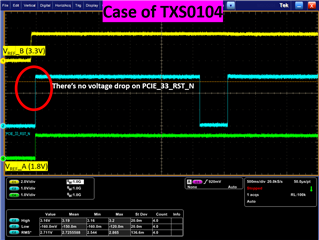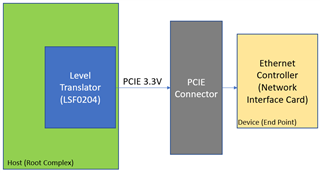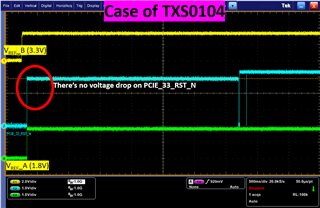Hi TI,
Could you please let me know why PCIE_33_RST_N has a voltage drop?
I did the same test with TXS0104 but it didn't observe the below weird waveform.
Please refer to the below schematic/block diagram and waveform.
Schematic of LSF0204

Waveform: Voltage drop w/LSF0204

Waveform: NO Voltage drop w/TXS0104

Block Diagram (Simplified)

Thank you.
Best Regards,
Seunghwan Lee.




